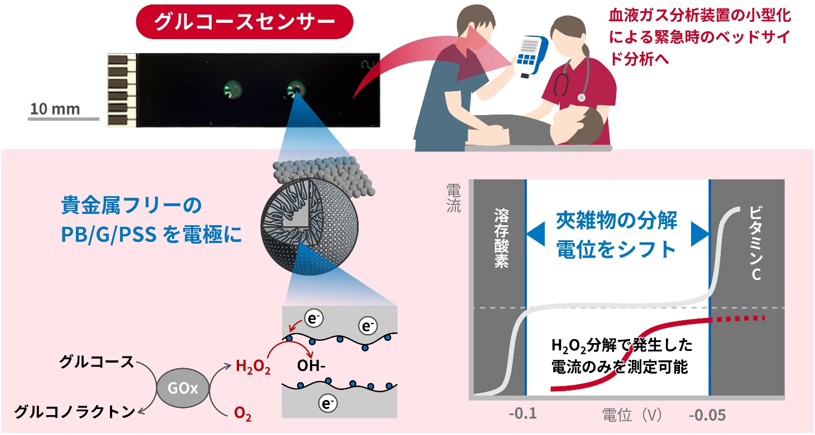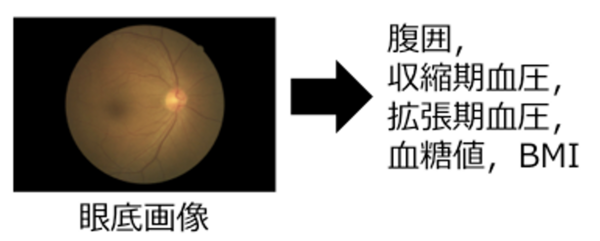2025-05-12 産業技術総合研究所

<関連情報>
- https://www.aist.go.jp/aist_j/press_release/pr2025/pr20250512_3/pr20250512_3.html
- https://pubs.acs.org/doi/10.1021/acselectrochem.5c00045
アスコルビン酸存在下で機能する環境的に持続可能な貴金属フリー酵素センサー Environmentally Sustainable, Noble-Metal-free Enzyme Sensors Capable of Functioning in the Presence of Ascorbic Acid
Akiko Yoshida,Zheng-Ze Pan,Mutsuhiro Ito,Kenichi Izawa,Yuka Minegishi,Yusuke Sakuda,Yukinori Noguchi,Yasuhisa Hasegawa,Tetsuji Itoh,and Hirotomo Nishihara
ACS Electrochemistry Published: May 11, 2025
DOI:https://doi.org/10.1021/acselectrochem.5c00045
Abstract
We propose Prussian blue (PB) dispersed in graphene-coated porous silica spheres (G/PSS), referred to as PB/G/PSS, as an innovative and environmentally sustainable working electrode for a small enzyme sensor targeting H2O2 detection. For devices that use conventional platinum electrodes, overlapping oxygen reduction and ascorbic acid oxidation reactions interfere with the H2O2 measurements. As a result, ascorbic acid must be physically removed beforehand, and H2O2 is typically measured by its oxidation current at +0.6 V vs. Ag/AgCl. In contrast, the PB/G/PSS electrode offers a distinct potential window (-0.1 to -0.05 V), free from these side reactions, enabling precise H2O2 detection via reduction current, even in the presence of dissolved oxygen and ascorbic acid. Applying the PB/G/PSS construct in a device, we showed reliable glucose detection through enzyme-mediated reactions in a compact device. We further refined the design for glucose-sensing applications in biological solutions, targeting future applications in blood-based detection. Additionally, leveraging the dual functionality of PB/G/PSS as both a working and reference electrode, we successfully demonstrated a fully functional enzyme sensor with noble-free electrodes that leverage a streamlined and integrated architecture. This work highlights the versatility and potential of PB/G/PSS electrodes in advancing next-generation biosensor technologies.


